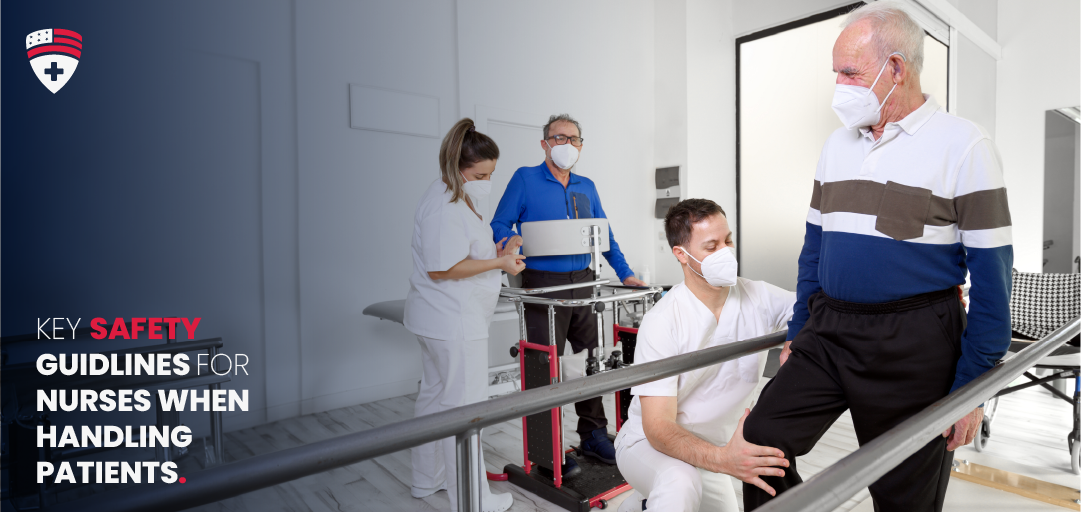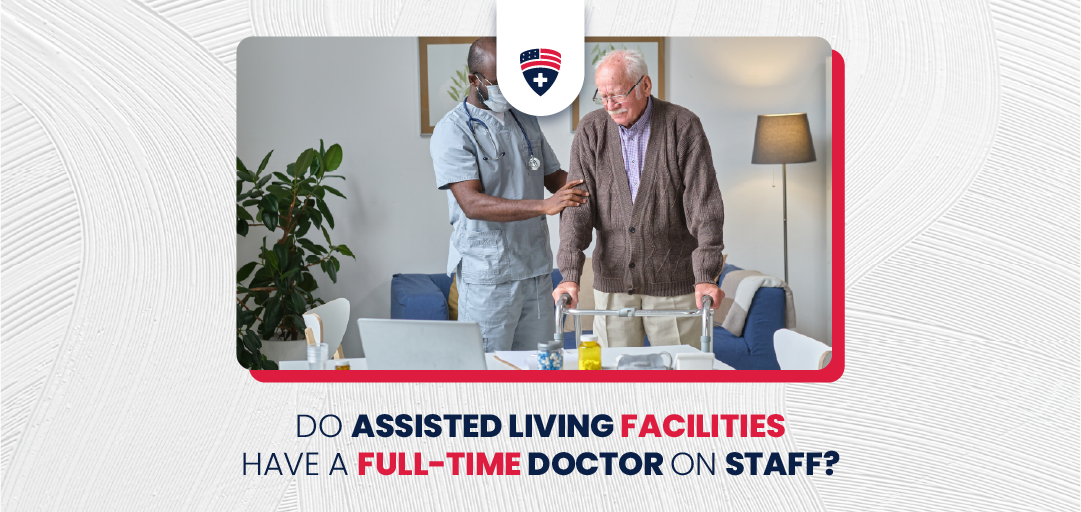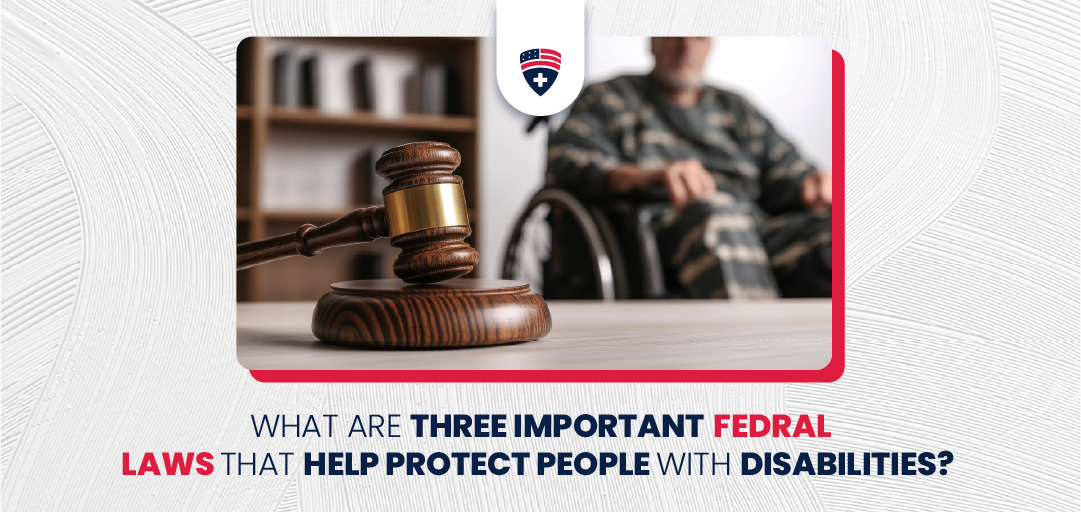
Key Safety Guidelines for Nurses When Handling Patients
Nurses play an important role in patient care by directly providing medical assistance. In their daily routines, nurses face various challenges.
Safe patient handling is a crucial aspect of nursing as it not only protects the well-being of patients but also prevents injuries among nurses and other healthcare staff.
According to the Bureau of Labor Statistics, around 19,790 nurses get injured each year in the U.S. due to patient-handling tasks like lifting, moving, and repositioning patients.
At American Healthcare Compliance, we have a program about Patient and Workplace Safety in Healthcare. It teaches about the risks when moving patients and how to stay safe at work. Contact us to learn more.
Below, we will discuss safety guidelines for nurses in handling patients. This will focus on the correct techniques and equipment to use.
What Is Safe Patient Handling?
It is the proper way and tools used to move, lift, and patient repositioning safely. This act keeps both patients and nurses safe from injuries.
In medical places, handling patients is a routine task. However, if it is done wrong, it could cause severe injuries, like back issues for nurses.
Using safe patient care practices reduces these risks, leading to better care and job satisfaction.
Benefits of Investing in Safe Patient Handling
Investing in safe patient handling has many benefits, such as:
- Fewer injuries among healthcare workers.
- Better patient comfort and safety.
- Lower healthcare costs due to fewer worker compensation claims.
Always select the proven benefits of investing in safe patient handling.
7 Safe Handling Patients Techniques
Safe patient handling involves a variety of techniques designed for specific tasks and patient needs. Here are seven key safe patient-handling techniques used in healthcare settings.
- Machine Lifts: Bring in mechanical tools to raise and move patients, lightening the physical burden on caregivers.
- Slide Sheets: Make sliding and shifting patients in bed a breeze without the need to lift.
- Transfer Boards: Offer a slick surface for moving patients from one surface to another.
- Gait Belts: Help patients with limited motion by giving support during transfers.
- Two-Person Lift: Get two carers to lift and move heavier patients securely.
- Pivot Transfers: Use pivot methods to shift patients from bed to chair with barely any lifting.
- Correct Positioning: Change patient positions to avoid bed sores and boost their comfort.
Importance of Ergonomics
Healthcare ergonomics is about customizing the workplace to suit the bodily demands of healthcare employees. It lowers the chances of harm while boosting job performance.
Ergonomic tips for nurses include:
- Adjusting the height of beds and workstations.
- Using ergonomic tools and equipment.
- Taking regular breaks to stretch and relax muscles.
Proper Body Mechanics for Nurses
Proper body mechanics are crucial for nurses to prevent injuries and strain while performing their duties. Here are some key principles:
- Align the Body: Keep the body in alignment during tasks.
- Use Legs for Lifting: Bend the knees and use leg muscles to lift.
- Avoid Twisting: Turn the whole body instead of twisting the spine.
- Stay Close to the Load: Keep the patient or object close to your body to reduce strain.
Let’s discuss when moving a patient what should you always avoid doing?
What to Avoid When Moving a Patient?
When moving a patient, here are five things you should always avoid doing:
- Avoid Sudden Movements
Sudden movements can startle the patient and potentially cause injury, especially if they are frail or in pain.
- Avoid Dragging or Sliding
Dragging or sliding the patient can cause skin tears, discomfort, and pain. Always lift and support them properly.
- Avoid Lifting Alone
Always use proper lifting techniques and seek assistance if needed to avoid strain and injury to yourself and the patient.
- Avoid Rushing
Take your time during transfers and movements to ensure everything is done safely and smoothly.
- Avoid Neglecting Patient Comfort
Always talk to the patient, and check their comfort before and during the move.
These practices help maintain the safety and well-being of the patient during transfers and movements.
Guidelines for Carrying a Patient on a Stretcher
General guidelines for carrying a patient on a stretcher include:
- Before moving, ensure the stretcher is in proper working condition.
- Talk to your team about how you’ll move the patient and who will do what.
- Bend your knees, not your back, when lifting. Use your legs to lift the stretcher smoothly.
- Keep the stretcher steady and move slowly. Avoid sudden movements.
- Strap the patient in securely and make sure they are comfortable during the move. Watch them closely.
These steps help make sure the patient stays safe and comfortable while being moved on the stretcher.
How to Handle Difficult Patients?
Dealing with challenging patient behaviors during handling requires:
- Use clear and respectful communication to address patient concerns and foster cooperation.
- Approach each interaction with empathy and prioritize patient comfort and dignity.
- Engage other healthcare team members for assistance when dealing with difficult patient-handling situations.
Nurses should create hospital activities for patients guided workouts, and walks to boost a patient’s movement.
These tasks keep their bodies healthy and stop problems like bedsores. When patients join in, they feel better mentally and emotionally.
Their physical health gets better quickly and they become happier, more cooperative patients.
Nursing Responsibilities Related to Safe Equipment Use
Nurses play a critical role in the safe use of patient-handling equipment:
- Always look at equipment for signs of damage, and report any problems immediately to the right people.
- Show your teammates how to correctly use machines and safe ways to handle patients.
- Keep precise logs of patient interactions, including any problems or close calls, to support ongoing efforts to get better.
Conclusion
Handling patients safely is important, not just for the nurses, but for the patients too.
Being safe is a key element of nursing. It involves understanding and constant effort for betterment.
By using proper techniques and equipment, nurses can prevent injuries and improve the quality of care.
Safe handling practices create a safer, more efficient healthcare environment.
Do not wait for an injury to happen. Join AHC’s Patient and Workplace Safety in Healthcare program today and ensure a safer environment for both you and your patients.
Contact us now to learn more.
FAQs
Q: Why is safe patient handling important?
It is important as it stops patients and healthcare staff from getting hurt, creating a secure, comfortable environment.
Q: What are the best techniques for safe patient handling?
Good ones are mechanical lifts, the right body movements, and transfer tools like slide sheets and gait belts.
Q: How can nurses avoid injuries while handling patients?
Nurses can prevent injuries by sticking to safe handling rules, using the right gear, and keeping up good body mechanics.
Q: What equipment is essential for safe patient handling?
Essential equipment includes mechanical lifts, transfer boards, slide sheets, and gait belts. Proper training and maintenance of these tools are also crucial.
Q: How often should patients be repositioned?
Move patients at least every couple of hours. It stops pressure sores and other issues, making sure they stay comfortable and healthy.






